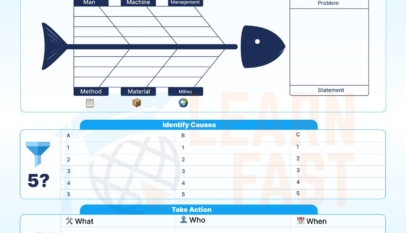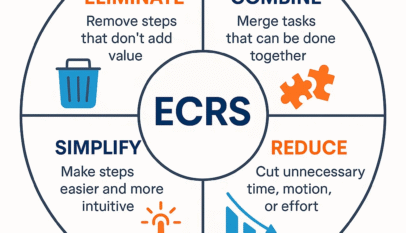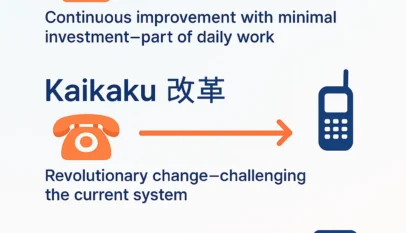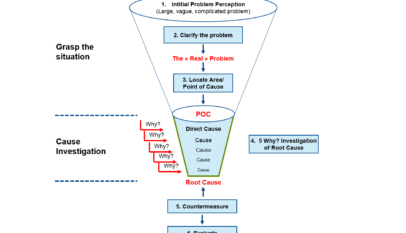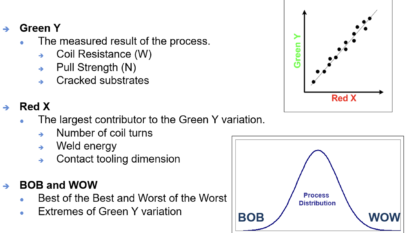Problem-solving is an essential skill that enables us to navigate through the challenges that life throws at us. When faced with problems, we often feel overwhelmed and struggle to find effective solutions. But what if there was a step-by-step guide that could help us overcome these obstacles with ease?
Today, we will discuss an 8-step problem-solving process, as illustrated in the image from the Lean Enterprise Academy. This image provides a comprehensive framework for approaching problems systematically and structured, ensuring success in tackling even the most complex issues.
Step 1: Clarify the Problem
The first step in problem-solving is to clarify the problem. It involves identifying the issue, understanding its scope, and defining the problem statement. This step sets the foundation for the entire process, ensuring that everyone involved clearly understands the problem.
Step 2: Break Down the Problem
Once the problem has been clarified, it’s time to break it into smaller, more manageable components. By analyzing the problem and understanding its root causes, you can develop a deeper understanding of the issue and generate insights to guide the next steps.
Step 3: Set a Target
Setting a target involves establishing a clear, achievable goal for solving the problem. This step helps to provide direction, motivate the team, and create a benchmark for measuring progress.
Step 4: Analyze the Root Cause
Now that you understand the problem and its components, it’s time to analyze the root cause. By identifying the underlying factors contributing to the problem, you can address them directly and develop a more effective solution.
Step 5: Develop Countermeasures
With the root cause analysis complete, it’s time to develop countermeasures that address the identified issues. These countermeasures should be based on the insights gained during the analysis and tailored to effectively address the problem at hand.
Step 6: See Countermeasures Through
Once the countermeasures have been developed, it’s time to implement them. This step involves implementing the proposed solutions and closely monitoring their progress to ensure they are effectively addressing the problem.
Step 7: Monitor Results and Process
After implementing the countermeasures, monitoring the results and evaluating their effectiveness is crucial. By collecting data and analyzing the impact of your solutions, you can determine whether the problem has been resolved or if further action is needed.
Step 8: Standardize and Share Success
Once the problem has been successfully addressed, it’s essential to standardize the processes and solutions that led to success. This step ensures that the lessons learned are applied to future problem-solving efforts and that successful methods are shared with others who may face similar challenges.
An 8-step problem-solving process is a powerful tool for overcoming daily challenges. By following these steps, you can tackle problems more effectively and build a culture of continuous improvement and learning within your organization. Start applying this process today and unlock the secrets of problem-solving success.
You can get the poster from their website.


